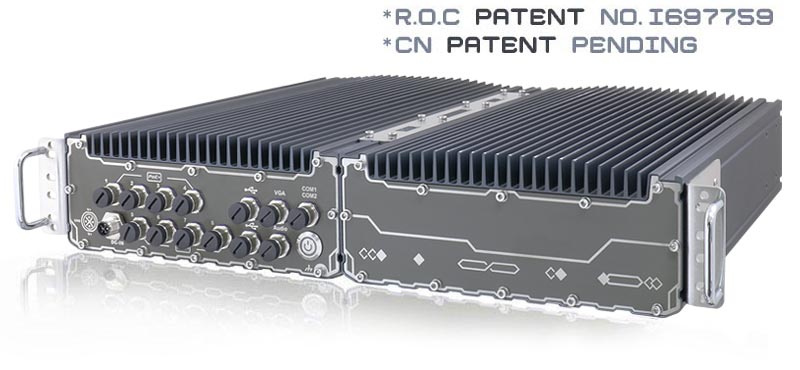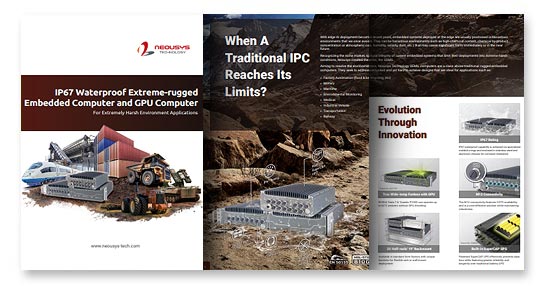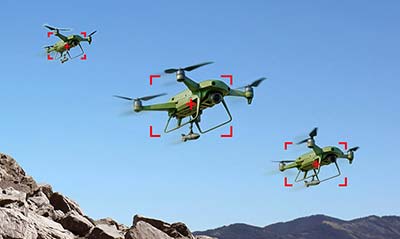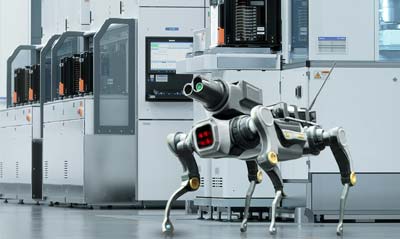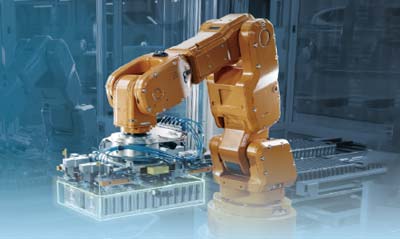Starting from a 4U rackmount system based on a clone IBM PC motherboard for controlling manufacturing process, industrial computer, or IPC, since its debut in 1980s has become smaller and smarter generation after generation over the course to the Era of AIOT and Autonomous Robotics. In addition to factory automation, the application of industrial computers have pervaded across many areas, from intelligent transportation, defense & security, power & energy, medicine, digital signage to utilities operations, environmental monitoring, and many more.
Today, an industrial computer could be embedded in a smart factory machine that produces cutting-edge semiconductor components, or a medical XR apparatus that helps perform brain surgeries, a driverless car that delivers goods to homes, a Kiosk machine that provides self-help services to customers in convenient stores or restaurants, or it could be built in a subway entrance to control the turnstile where you swipe your card to get through.
Industrial computers are not like commercial PCs
They are made to communicate and control
Unlike general purpose computers—such as desktops used at homes or in offices, Industrial computers are special breeds of personal computers (PCs) deployed or embedded in an automatic/autonomous system to provide the niche computing power for collecting and analyzing data and enabling control / monitoring of the system as well as M2M and human-machine communications.
The most advanced such systems, with Machine Learning and Artificial Intelligence (AI) capabilities, command high degree of autonomy and require least human intervention in process. Some people see them as the enabler of The 5th Industrial Revolution which marks the paradigm shift from IoT to AIoT.
Industrial computers are deployed to everywhere of human needs
Their application scenarios
These industrial computers, or IPCs, could be embedded in the wind turbines situated in a desert or a seashore area exposed to enormous day-night temperature difference and other negative environmental factors. Or, they could be embedded in an outdoor system controlling or monitoring energy/power/sewage/transportation facilities and have to withstand harsh and variable weather conditions.
Some of them could be installed in rolling stock or wayside apparatuses susceptible to extreme shocks and vibrations as well as high voltage and electro-magnetic interference. Some of them have AI capabilities and are deployed for driverless vehicles--including autonomous cars and planes--and have to conquer all the extreme situations on the road or in the air.
Some IPCs are embedded in medical apparatuses that must observe the aseptic and hygiene standards for operating rooms. And some could be used in high-end smart factories like semiconductor fabs where clean rooms are 100 times cleaner than a hospital operating room for protecting silicon wafers from ambient contamination.
What make the making of industrial computers so challenging?
The features and benefits of IPC
Therefore, computers made for industrial purposes must fulfill the following features and satisfy the demands of their applications:
- Industrial computers must be made with higher level of rugged designs than normal PCs to provide reliable and stable operations in their application environments that might contain extreme harsh conditions and require 24/7 ceaseless operations. IPCs usually have a wider operating temperature range, higher capabilities in resisting shocks, vibrations, humidity, dust, salt, acid, voltage, electro-magnetic interference, adverse weather, or any other kind of negative environmental factors depending on their application settings and scenarios.
- Industrial computers not only have to maintain compliance with the standards of their domain computers but also often have to observe the industrial standards or regulations in their vertical markets to fulfill application demands and interoperability with other system components.
- For example, computers used for military or defense purposes usually follow the military standards issued by the U.S. Department of Defense (called "MIL-STD" or "MIL-SPEC") in providing interoperability, SWaP (size, weight and power) optimized and rugged platforms ready for quick deployment with off-the-shelf products.
- Industrial computers must have special I/O designs for connecting to different sensors and devices in their purposed application system. Different applications usually have their own I/O emphases. For example, computers used in factory automation usually require serial ports like RS232/422/485 for supporting Modbus/Fieldbus serial communication protocols, or LAN ports for supporting Ethernet, which are rarely seen in commercial computers. Besides, computers used for controlling digital signage would require greater variety in image input/output ports for displaying high quality images, and expansion slots for boosting graphic processing performance. Richer and more versatile I/O designs would usually increase flexibility and expandability for system deployment and deliver greater economic benefits to customers.
How do you choose an industrial computer that best suit your application?
We would like to discuss the prerequisites into two directions, hardware specifications and environmental factors. Let’s start with an industrial computer's specifications.
Hardware Specifications
Check the hardware requirements listed by your software provider for reference.
With modern complex applications, the need for real-time reactions may require artificial intelligence (AI). Applications such as multiple image recognition, or the ability for a machine to sense, reason, act in response to, or adapt according to the application. The complexity of the application will determine the need for an inference accelerator or GPU.
Random Access Memory plays a critical role in deciding computing speed and the overall system performance. ECC (error-correcting code) memory is another type of RAM, which is often chosen for rugged systems or mission-critical applications but typically has a higher price.
For industrial applications, solid state disk (SSD) is more rugged and reliable than the mechanical hard disk drive (HHD), and offers significantly higher throughput, but has a higher price tag per GB of storage. If your system will rely on edge computing rather than uploading most data to the cloud, you will need larger capacity for data storage, HDD will be a more economic choice. Of course, you may like to have both of them and obtain high speed and high capacity at the same time if your budget allows.
Communication is vital in embedded computing and it brings connected systems into a harmonious sync to execute tasks. Therefore, it is important to make a list of all the devices and equipment the industrial computer will need to establish links and identify their I/O type. You don’t want to have a computer deployed to your floor which is not able to fetch data from all of your critical devices and have to install a second computer to compensate.
An embedded computer often has to fit in a space facing restrictions in size, weight and power (SWaP), which sometimes run into contradiction with performance demand. Understand your environmental restrictions and choose a computer with form factors that meet your needs.
Your system is expected to be used for years to generate returns on investment, but technologies are always advancing and your system could be left behind. To protect your investment and maximize economic benefits, choose an industrial computer with future-proofing designs, so you can upgrade your system and add new features without sacrificing your existing system.
Your budget constraint is always your biggest pain point in planning your project and choosing a perfect computer. All your dreams about computing performance and stunning features have to be measured against your budget ceiling.
Environmental Factors
When choosing an industrial computer for your application, the "environmental factors" are of utmost importance, because, if the computer cannot operate in the deployed environment, all other specifications are just irrelevant. So understanding the environment your industrial computer will be operating in 24/7 becomes crucial to a successful deployment.
Heat is the biggest enemy for electronic components in a computer. Without an efficient thermal dissipation design, it can cause a processor to thermal throttle (reduced operating frequency) resulting in performance degradation; and the effects of long term high temperature operation of electronic components may also significantly reduce their lifespan! Many computers are deployed out in the open and perhaps have to boot under minus zero coldness in the morning and operate under blazing sun in up to 50°C air temperature at noon. Computers deployed to manufacturing facilities often have to face constant extreme heat. So identifying the temperature range in your application setting and make sure that your IPC supplier is able to provide "real" wide temperature support to meet your application needs.
Many computers are deployed to a confined space and will need a SWaP optimized design; others could be deployed in vehicles or mobile applications like autonomous mobile robots (AMRs) and will face extreme shocks and vibrations during operation. Find a computer with reinforced capabilities that address the characteristics of your application location.
Many vertical markets have their common environmental concerns that IPC applications have to address, such as shock and vibration, humidity, salinity, temperature, and many more, and certain industries have developed their own standards for electrical or electronic equipment. For example, defense applications often follow MIL-STD for ruggedness compliance; railway applications are often required to address the international standards in anti-electromagnetic interference and anti-shock and vibration capabilities; computers used in medical applications should observe water/dust proofing and aseptic standards. If you don’t have clear ideas about specific environmental requirements of your applications, look into industrial certifications for reference and assurance.































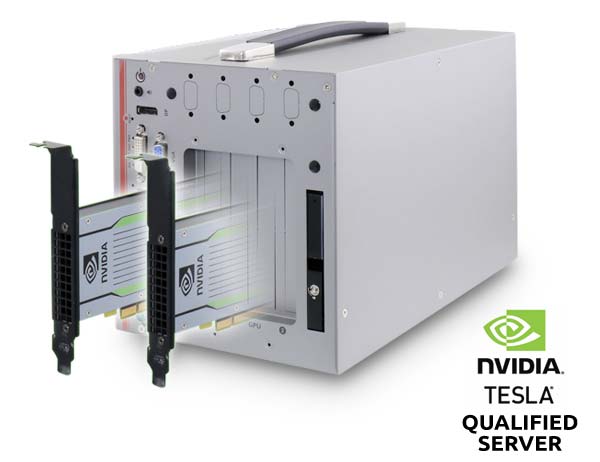
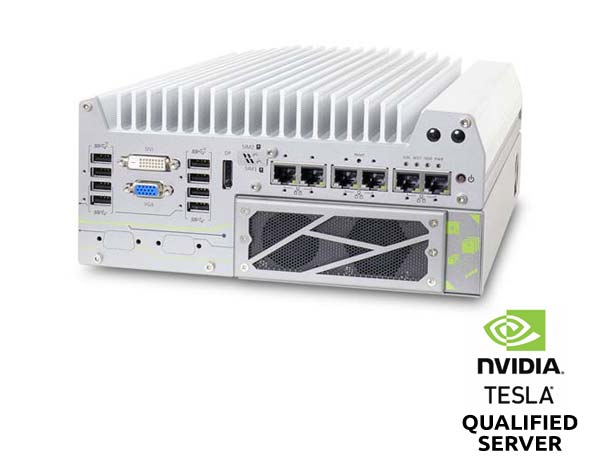







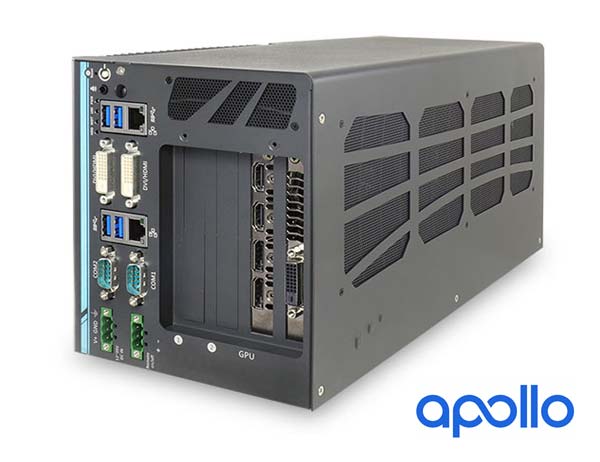
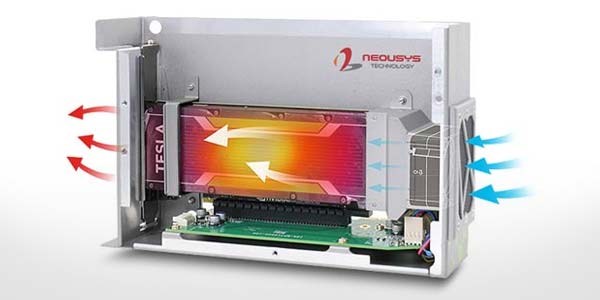


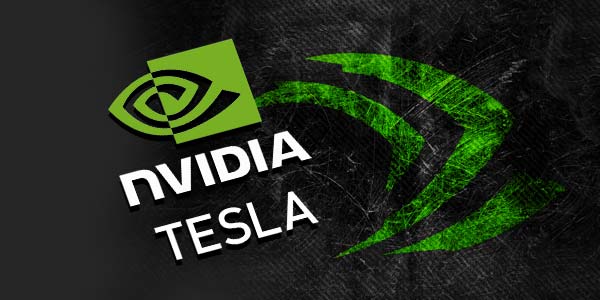
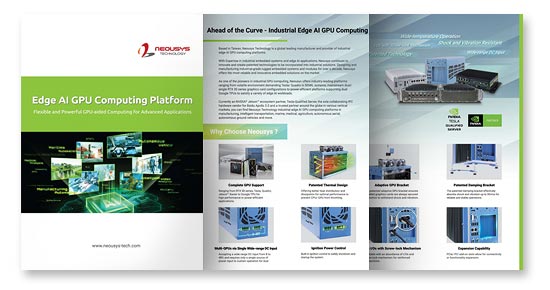
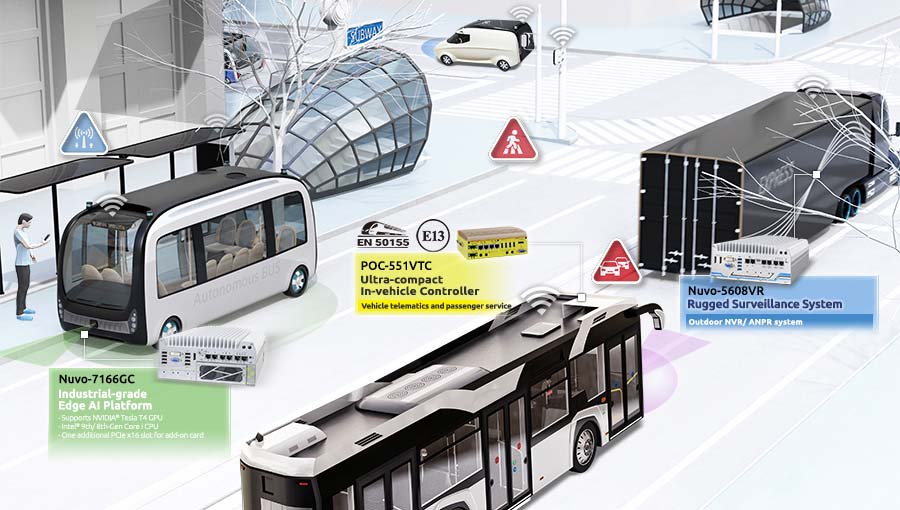
 Today, video surveillance can be found almost around every corner. At home, people set up their security IP cameras with motion detection warning so they can monitor with their handheld devices; in industrial factories, cameras monitor the safety of workers on the floor that automatically warns people in the control room in case there is a need to shut down machines to prevent disasters from happening; on trains, buses and at stations, cameras and mobile surveillance systems may be linked to law enforcement systems that can collect and analyze data to reduce/ prevent accidents; or they may have onsite video analytic applications such as facial recognition, for immediate countermeasures.
Today, video surveillance can be found almost around every corner. At home, people set up their security IP cameras with motion detection warning so they can monitor with their handheld devices; in industrial factories, cameras monitor the safety of workers on the floor that automatically warns people in the control room in case there is a need to shut down machines to prevent disasters from happening; on trains, buses and at stations, cameras and mobile surveillance systems may be linked to law enforcement systems that can collect and analyze data to reduce/ prevent accidents; or they may have onsite video analytic applications such as facial recognition, for immediate countermeasures.
